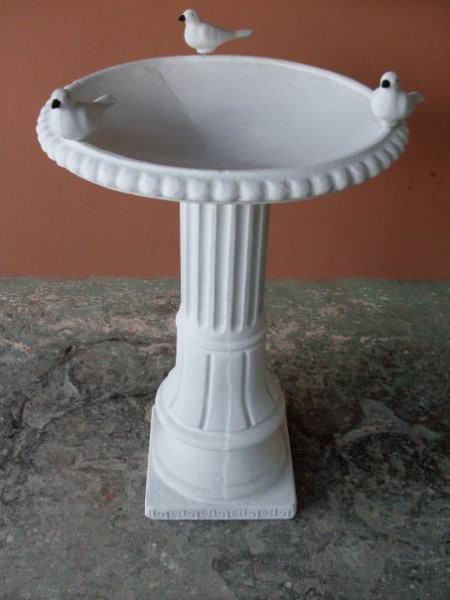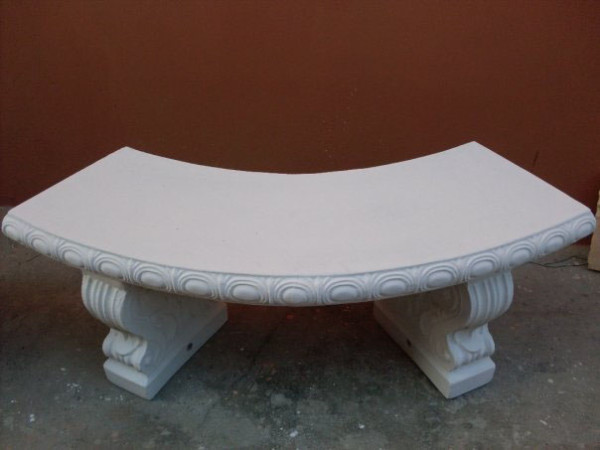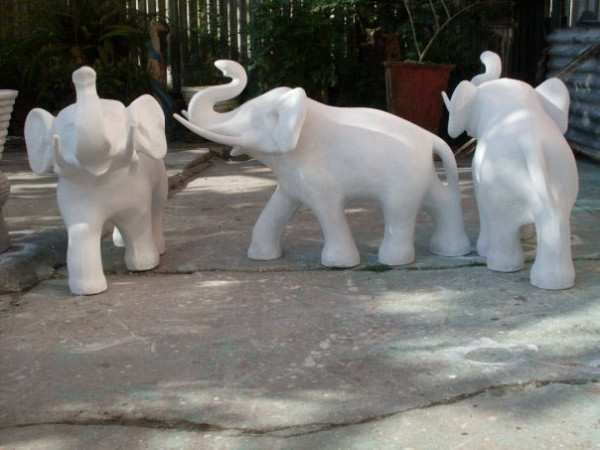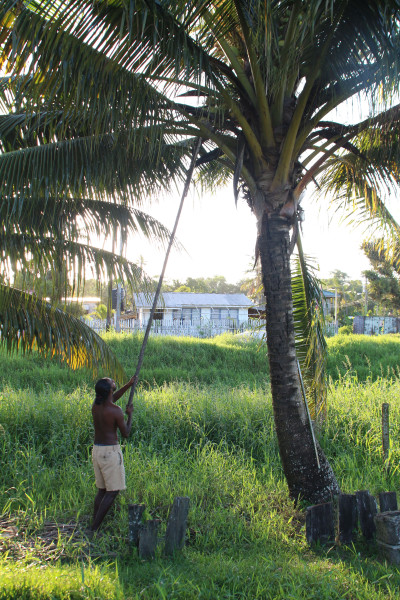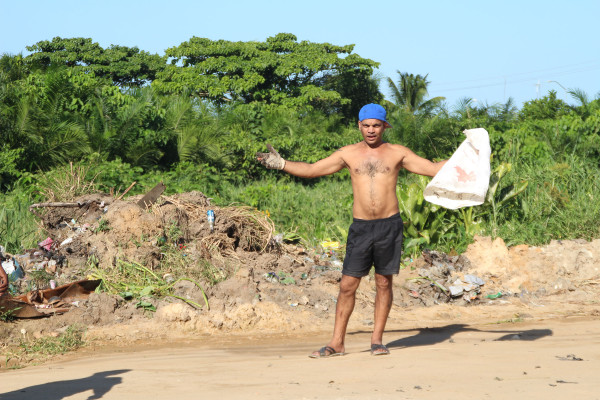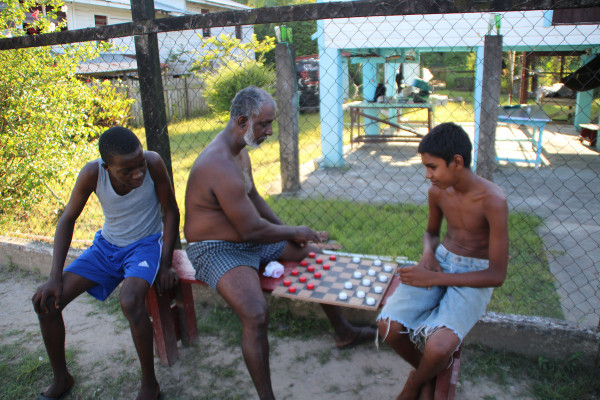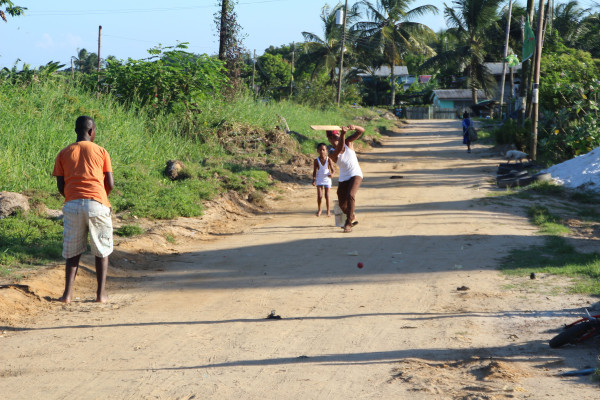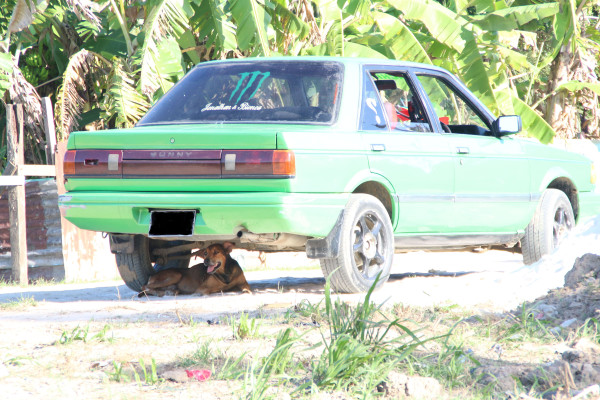By Mariah Lall With photos by Keno George
Whether it’s relaxing with old friends on a cool afternoon or playing a friendly game of draughts with someone from another generation, life in Little Diamond is laid back.
Positioned between the villages of Prospect and Great Diamond on the East Bank Demerara, Little Diamond is everything its name suggests and then some.
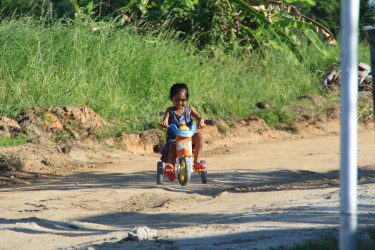
Even though commuters may tend to overlook the little village as they traverse the East Bank Highway on a daily basis, it really is the perfect example of life away from the hustle and bustle of the city.
With countless coconut trees bearing some of the sweetest water coconuts in the country and the cool breeze from the nearby Demerara River, Little Diamond is a perfect little hideaway equipped with all of the modern day necessities.
For Doreen Jeetlall, who is known by fellow villagers as ‘Aunty Doreen’, and a resident of Little Diamond for almost half a century, the community has always been a wonderful place to live.
Now 74 years old, she has been able to watch the village develop over the years and jumped at the opportunity to share her insight on life in the area.
When she first moved to Little Diamond, Aunty Doreen said, “…All the houses were little cottages, where ordinary country folk lived….we had no highfalutin people in here.
“When I first came here, people used to hang their underwear right on their front fence, but the people around here have since moved up. I don’t see anybody hanging underwear on the fence anymore,” she quipped.
Aunty Doreen gave The World Beyond Georgetown a brief history on the village’s longstanding church, which can be seen from the highway.
Established close to 64 years ago, St Joseph’s Roman Catholic Church is one of the community’s historical landmarks.
Aunty Doreen, an avid gardener, and who is responsible for the upkeep of the garden in the church’s compound related that the first building was dismantled and taken to the area from Leonora in the year 1941 but was later replaced by a new building in 1988 under the guidance of the now-retired Bishop Singh.
Just behind the church is what is known in the village as ‘Jumbie Corner’. It really is a burial ground, which is demarcated to facilitate the special sections for the burial of Christians, Hindus and Muslims.
Though explaining that she is often too occupied with gardening either at her home or at the nearby church to interact with the other villagers, Aunty Doreen described her village as a close knit community where “everybody knows everybody.”
She added, “It’s a little village with village people. I wouldn’t leave here. I have all of the conveniences available here and I don’t want to live anywhere else.”
Home to a population of over 300 people, the village is divided into two sections that are linked by a small wooden bridge.
The first section, where Aunty Doreen lives, has several thriving businesses including a funeral parlour and a concrete production entity on the public road, which makes exquisite concrete figurines, yard furniture, fountains, plant pots and walkways among other things.
In that same section, a short distance away, The World Beyond Georgetown found a group of men sitting around a table in a backyard discussing life over food and drinks.
Although they preferred not to have their pictures taken, the men gladly shared some stories about life in Little Diamond.
One of the men, who moved to the area 26 years ago in pursuit of the woman he now calls his wife, said, “Life is good, and we all live here peacefully.”
However, no paradise is without its challenges, as another villager explained. Some of these challenges are potholed streets and trenches filled with overgrown weeds, which, as one man explained, prevents proper drainage of the area during the rainy season. Improper disposal of garbage is also a sore issue for some residents, who complained of the lack of garbage trucks in the area. This results in some residents dumping their refuse at the corner of the road.
Meanwhile, the other section of Little Diamond also has its fair share of problems as residents are currently involved in a court case over the land on which they live.
Janet Ran, a resident of the area for over 21 years said the dispute has been ongoing for a number of years. The land, she claimed, was once an experimental sugar-cane field owned by the Guyana Sugar Corporation, but it was later abandoned. She and other persons later moved into the area and squatted on the land. However, after a number of years, the residents were summoned to court by a local business.
“A lot of people in the area are poor, they can’t really afford to move from here,” she said.
Additionally, the need for development was cited as a community issue, as the village is without a health centre, a police outpost or a recreational centre.
She explained that even though the youth in the area have interests in sports like football and cricket, the lack of recreational facilities in the area forces them to play cricket in the street, much to the annoyance of some residents whose windows are damaged by the balls. Ran further noted that the lack of facilities leads to the youth becoming idle and susceptible to negative activities.
Nevertheless, residents seem to be quite content with life in Little Diamond as it is as humble as it is peaceful.

